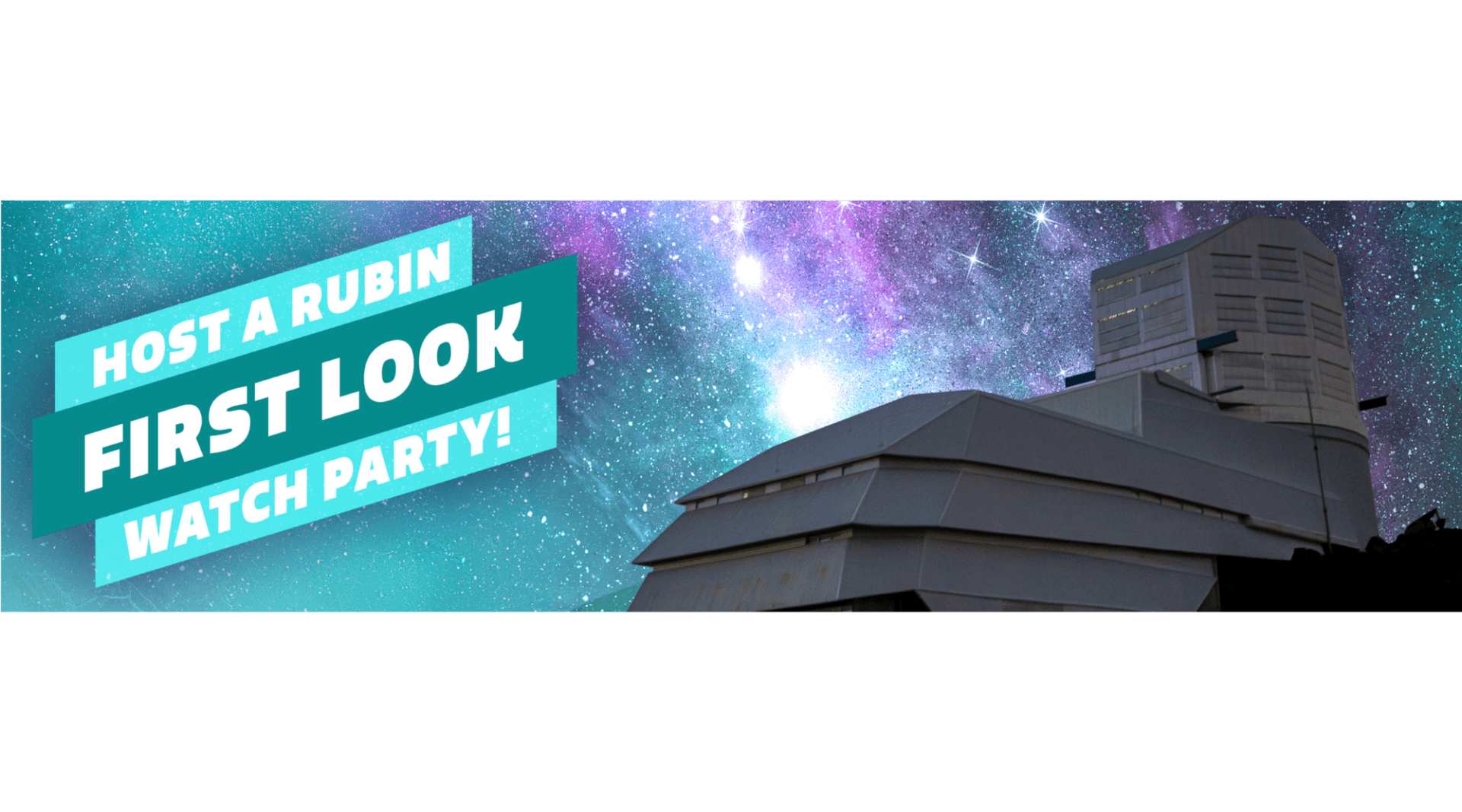Rubin First Look Watch Parties
Rubin First Look Watch Parties
The release of the first images from NSF–DOE Vera C. Rubin Observatory is right around the corner. This will mark the beginning of a new era in astronomy, and we invite you to take part.
Rubin First Look Watch Parties are expected to take place at partner institutions, planetariums, museums, libraries, universities, and other organizations in the U.S., Chile, and around the world.
The core of the Watch Parties will be the First Look unveiling event on 23 June 2025, which will be streamed live (in English and Spanish) to Watch Party venues.
About the First Look Unveiling Event
The Rubin First Look unveiling event is the primary feature of Rubin First Look Watch Parties and will include the reveal of the Rubin First Look images. The unveiling event will be held at 11:00 a.m. EDT on Monday, 23 June 2025, in the Fred Kavli Auditorium at the National Academy of Sciences Building. A link to live stream this event will be sent to all Watch Parties.
Local adaptations are welcome but optional — local language, scientists, dignitaries, media, planetarium shows, photo exhibitions, guided tours, star parties, hands-on activities, talks, etc. The sky’s the limit!
More information
NSF–DOE Vera C. Rubin Observatory is funded by the U.S. National Science Foundation (NSF) and the U.S. Department of Energy’s Office of Science (DOE/SC). Rubin Observatory is a Program of NSF NOIRLab, which, along with SLAC National Accelerator Laboratory, will jointly operate Rubin.
Join a Rubin Watch Party near you
For Organizers
Why host a Rubin First Look Watch Party?
The Rubin First Look Watch Parties will be a worldwide event to celebrate the release of Rubin Observatory’s First Look images. Organizers who sign up will receive access to materials and information for hosting a Rubin First Look Watch Party at their venue. Material packages include access to the Rubin First Look unveiling event live stream, a vast library of Rubin media content, and many more resources. See our list of Rubin First Look Watch Party materials below.
Rubin First Look Watch Party Materials
Materials available on the day of Rubin First Look
Live stream of the Rubin First Look unveiling event in Washington, D.C., in English (YouTube live stream)
Live stream of the Rubin First Look Watch Party in Santiago, Chile, in Spanish (YouTube live stream)
Live Domecast of the Rubin First Look unveiling event for planetariums in English (available natively for Digistar domes or through a 2k fulldome YouTube live stream; hosted by the U.S. Space & Rocket Center's INTUITIVE Planetarium)
WorldWide Telescope tours of the first Rubin images
All Watch Parties will be able to view and zoom in on the First Look press release images when released during the Rubin First Look unveiling event. If a venue, for technical reasons (like importing into a planetarium system), needs the full-resolution materials in advance, they may apply for 24-hour embargoed access to the following materials (with download open 48 hours in advance):
Rubin First Look Press Release with First Look images and videos.
Online materials (materials will be linked as they become available)
Test image of similar size and format to the First Look images
Rubin 3D model (The Cosm-Rubin Digistar planetarium package, available for Digistar domes)
Hashtag #RubinWatchParty (to exchange photos and videos of Rubin Watch Parties across the U.S., Chile, and globally)
Visibility of the event on the Rubin Observatory website and through our wide social media network
Certificate associating your Watch Party with NSF–DOE Vera C. Rubin Observatory
Host a Rubin First Look Watch Party
Complete the sign up form below to host a Rubin First Look Watch Party at your venue.
What do we expect of you?
The host organization must agree to the following:
The event(s) will be held on or after Rubin First Look, 23 June 2025.
The institution organizing the event is expected to bear the costs of the event.
Honor the embargo. Information, images, and videos may not be displayed before the press release is published, exact time to be determined.
Engage with social media by sharing images from your event(s) using the hashtag #RubinWatchParty
Ideally, other activities will be included in the event, such as a talk by a scientist or a hands-on activity.
Joining the Live Stream
Rubin First Look Unveiling Event Feed Specifics
- Flatscreen, English (these will all have the same live stream content):
- Flatscreen, Spanish (Santiago Watch Party feed in Spanish):
- Fulldome, English:
Domecast Instructions
View the instructions for joining the Domecast in English and Spanish.
Tell us about your Watch Party
Photo Gallery of Watch Parties
Upload images from your Rubin First Look Watch Party here!
Open the Watch Party Photo Gallery folder.
Create a new folder and name it with the format VenueName_City. (Ex: NOIRLab_Tucson).
Add your images to the folder, name them with the format Title_PhotographerName_VenueName.
Post-Event Survey
We want to know how it all went! Tell us in this Post-Event Survey.
Contact
Email us at RubinParty@noirlab.edu.

